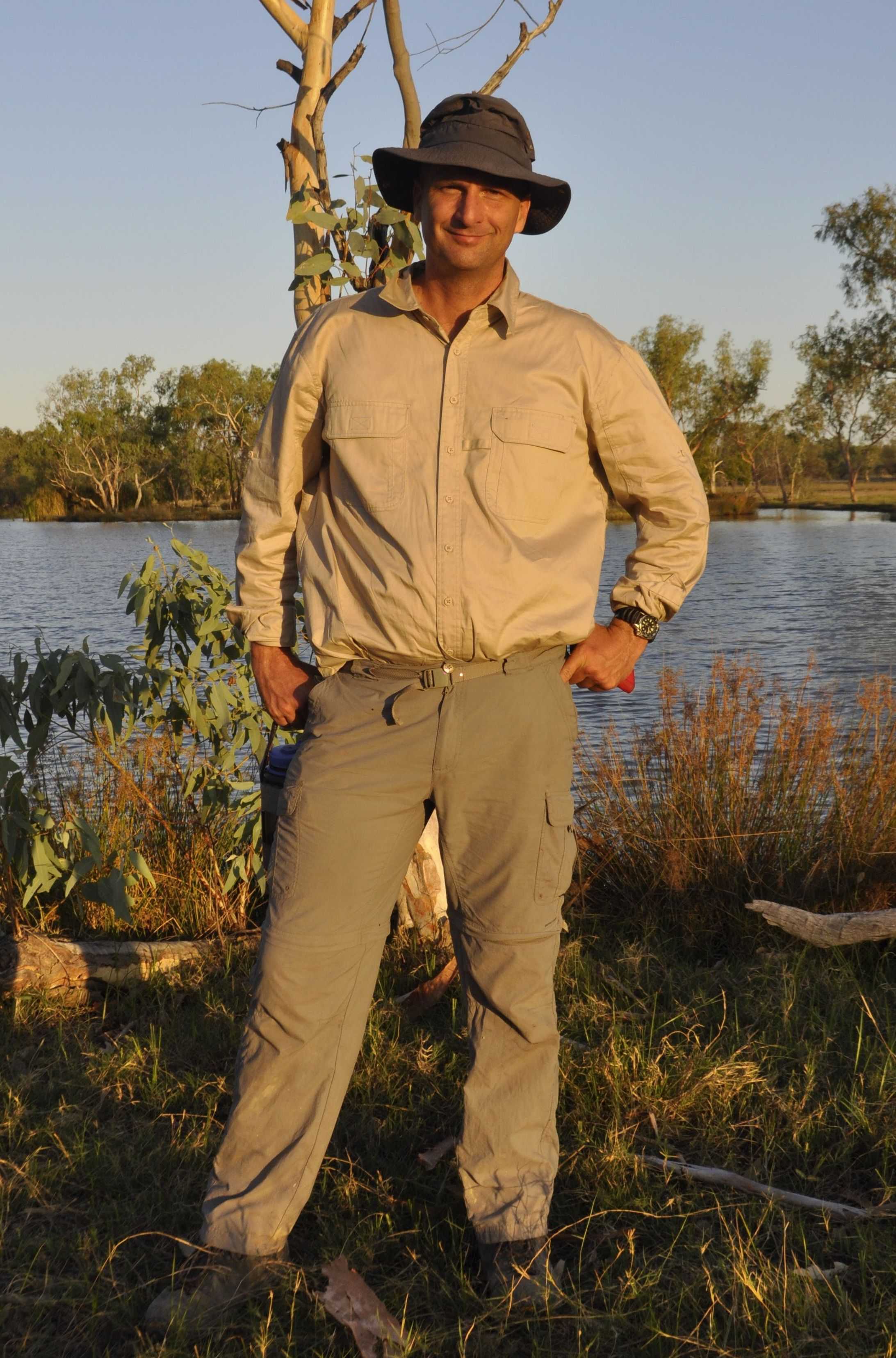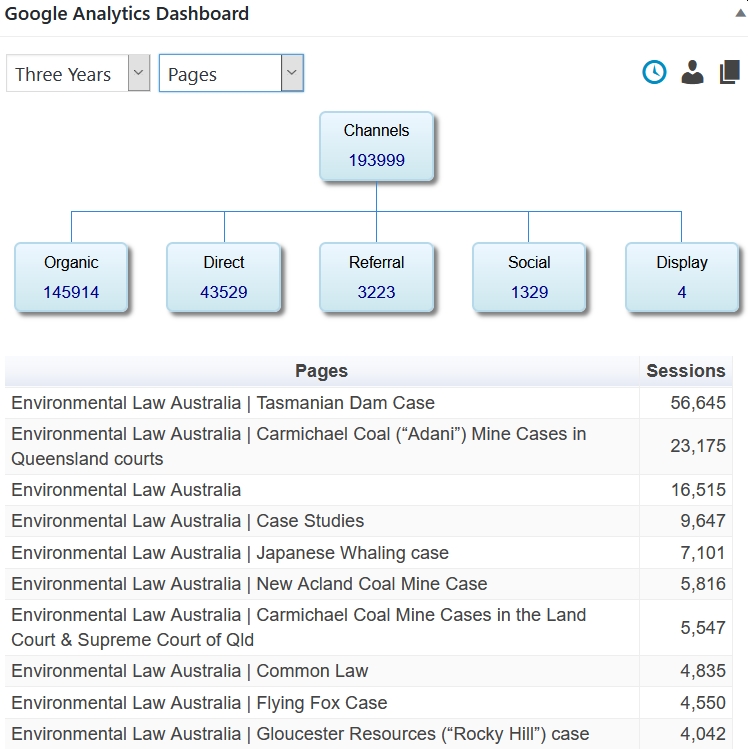Website author
This website is a free public service provided by Dr Chris McGrath, LLB (Hons), BSc, LLM, PhD, a barrister in Queensland practising in environmental law and an Adjunct Associate Professor in the School of the Environment at the University of Queensland.
Contact:
Dr Chris McGrath
Higgins Chambers
Level 29, 239 George Street
Brisbane Qld 4000 Australia
M: 0438 299 097
T: (07) 3221 2182
E: chris.mcgrath@qldbar.asn.au
This website aims to deliver the core objectives and values of my professional practice:
- working for nature through the law, research and education;
- courage and endurance to fight and win against large, aggressive and well-resourced opponents, and to go on after hard losses;
- assisting the court;
- pursuing only legitimate arguments and applying the model litigant rules, whether acting for a government or private party;
- pursuing and achieving excellence;
- being client-centered;
- a spirit of service; and
- humility.
The last four of these values are adopted from the Louisiana Capital Assistance Center. I thank LCAC director Richard Bourke for bringing them, especially “a spirit of service”, to my attention in an amazing talk he gave in Brisbane in July 2018. You can see his TEDx talk here.
Three lessons for public interest lawyers
There are three over-arching lessons that I have learnt from the public interest litigation presented as case studies on this website:
- Winning litigation is based on a sound knowledge and application of the law and procedural rules using the basic legal problem-solving method (ISAAC*). All strategies and tactics to win at trial build on this foundation. You don’t need to be a brilliant lawyer or Rhodes Scholar to run cases successfully. If you are diligent and do the basics well, you will generally run successful cases.
- Ethical practice – Your goal (as a lawyer) is to help the court reach the right decision according to law and your client’s interests are secondary to this. Apply the Model Litigant Principles even when you do not act for the Crown – they are a sound guide to ethical practice. In particular, act fairly and do not take technical points simply to delay and drain your opponent’s resources or to avoid the real issues in the case. But also be aware that for most lawyers the goal is to win for their client and provided they do not lie to the court or break the law pretty well anything goes. You should be honest and reasonable but do not expect your opponent will be.
- Courage and tenacity – environmental litigation, particularly against large and well resourced opponents, can be a very difficult war of attrition even for government regulators. You will need courage and tenacity to succeed and to survive the hard losses in your career.** Narrowing and avoiding disputes through negotiation and compromise are important and you should always pursue them where possible but sometimes you need to fight and you will need courage and tenacity to do this
* ISAAC stands for: Identify the legal issue; State the legal rule for the issue; cite an Authority for the legal rule; Apply the rule to the facts; and reach a Conclusion. IRAC is another commonly used acronym for the basic legal method. It stands for Issue, Rule, Authority, and Conclusion.
** For me, one of the hardest losses in my career was the Paradise Dam Case. I woke for many months afterwards racked by anger and sadness over this bitter loss. Losses in major climate change cases, such as the Adani Coal Mine, leave me feeling numb for the loss of ecosystems such as the Great Barrier Reef that they fail to protect.
Teaching materials for university courses
The case studies on this site provided course materials for Environmental Litigation (LAWS8187), a postgraduate law course offered by the Australian Centre for Environmental Law (ACEL) at the Australian National University (ANU) College of Law in Canberra in 2009, 2010, 2012, 2014 and 2016 but not currently offered.
Other resources on this site, including the quizzes and lectures, were created for the following undergraduate and postgraduate courses I taught full-time at UQ from 2010-2016 and in 2020:
- Regulatory Frameworks for Environmental Management & Planning (ENVM3103 & ENVM7123)
- International Regulatory Frameworks for Climate Change & Environmental Management (ENVM3104 & ENVM7124)
Teachers and students in any other courses, at primary or secondary schools and members of the public are, of course, very welcome to use any of the materials available on this site.
Sources of documents in the case studies
The case studies available on this website are not limited to cases in which the author acted as a barrister, however, in practice it is far easier to obtain documents and explain their context if you have been involved in the litigation itself.
I acted as a barrister in the litigation the subject of the following case studies:
- New Acland Coal Mine Case (2017-2021)
- Springbrook groundwater case (2021)
- Shark drumline case (2019)
- Carmichael (“Adani”) Coal Mine Case in the Land Court and Supreme Court of Qld (2015-2016)
- Carmichael (“Adani”) Coal Mine cases in the Federal Court (2015-2016)
- Alpha Coal Mine Case (2013-2016)
- Wandoan Coal Mine Case (2011-2012)
- Plumb’s Chambers Case (2010-2011)
- Paradise Dam Case (2008-2010)
- Tornebene Appeal (2009)
- Anvil Hill Coal Mine Case (2007-2008)
- Newlands Coal Mine Case (2007)
- Yardley Case (2006-2008)
- Cassowary Case (2006)
- Khyber Case (2005)
- Wildlife Whitsunday Case (2005)
- Japanese Whaling Case (2004-2008)
- Frippery Case (2004-2008)
- Nathan Dam Case (2004-2005)
- Donnybrook Sandmine Case (2001)
- Flying Fox Case (2000-2001)
Documents for other case studies, such as the Tasmanian Dam Case, were obtained with the assistance of either relevant courts or litigants.
Top 5 landmark environmental legal cases in Australia
This website includes case studies of the “Top 5 landmark environmental legal cases in Australia“, listed by the Australian Geographic on 16 July 2018:
- Tasmanian Dam Case (Franklin Dam Case), Tasmania
- Flying Fox Case, Queensland
- Japanese Whaling Case, Antarctica
- Nathan Dam Case, Queensland
- Hazelwood Power Station Case, Victoria
What are the case studies intended to be used for?
While most court decisions have been freely available online for over a decade, such as on Austlii, those decisions typically represent the end point of the litigation process and do not show key documents in the process. Documents such as court pleadings show how the lawyers representing the parties framed the case. Expert reports, maps and pictures that were central to the trial process are typically not reproduced in the court judgment.
This website aims to provide those important background documents and link to the ultimate court decision for a selection of environmental cases so that students and members of the public can better understand the steps leading up to the court decision.
Google Analytics Data
Based on Google Analytics data, in the 3 years to 12 May 2021 this website had:
- 137,990 users
- 193,999 sessions
- 633,332 page views
The most popular pages by far were the Tasmanian Dam Case and the Carmichael Coal Mine Case.





